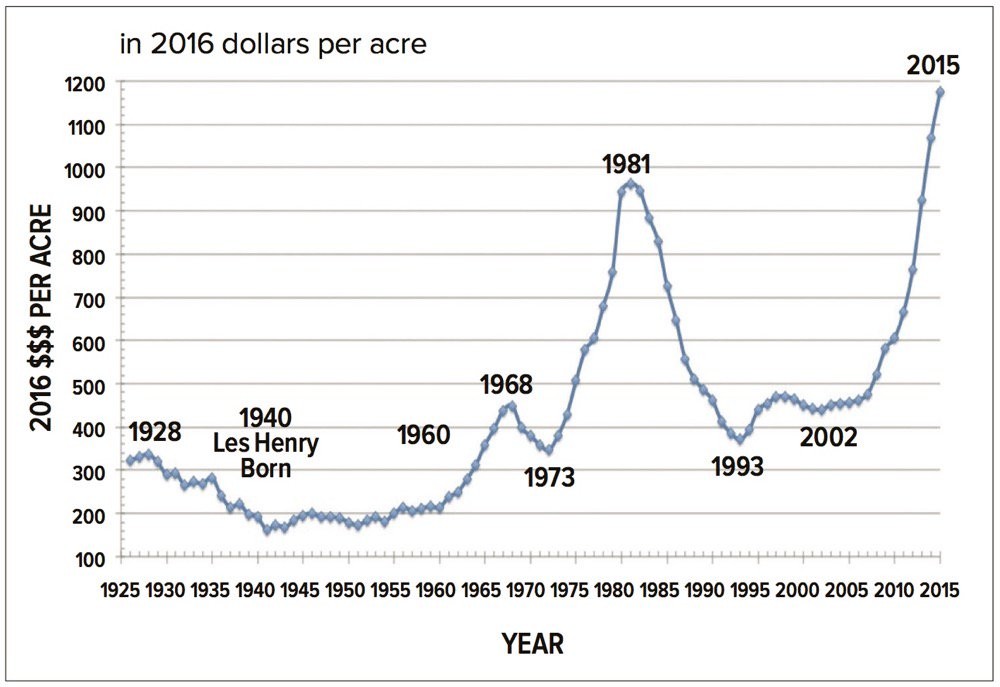Originally posted by Klause
View Post
Announcement
Collapse
No announcement yet.
Acreages/Land... Full Retard?
Collapse
Logging in...
Welcome to Agriville! You need to login to post messages in the Agriville chat forums. Please login below.
X
-
We don't always agree. But we do on this.Originally posted by jazz View PostThe first world isn't agrarian any more and has turned its back on that way of life. 150 yrs ago anybody that immigrated wanted land of any sort. That doesn't happen anymore even in Europe. Its all probably older families, kids gone to the big city, no need to expand and ride it out in place.
Post industrialism is the last step before collapse.
Comment
-
There are a lot more farmer's sons continuing the family business in Scotland than there are here. Lots of young guys needing land - most find a way to do it even with high land values, some choose to emigrate. Not sure how the Brexit deal will settle out but I expect it will trigger more farm immigration - and those that do are likely to have Canada at the top of their list. Relatively cheap land, a British connection and similar values.Originally posted by jazz View PostThe first world isn't agrarian any more and has turned its back on that way of life. 150 yrs ago anybody that immigrated wanted land of any sort. That doesn't happen anymore even in Europe. Its all probably older families, kids gone to the big city, no need to expand and ride it out in place.
Comment
-
Yes the Saskatchewan Farm Security Act im very familiar. Its a good read, yes there is bankruptcy protection but no protection from expropriation for greater good. If interest rates and commodity prices keep on the same path I assure you land prices will fall. In 1929 land prices fell 80% nearly overnight.Originally posted by jazz View PostThey cant take the home quarter BL. That's enshrined in the Canada lands act and as rock solid as any native treaty.
There is no wave of Europeans moving here. They love their social programs over there and would never move here and farm with their dick hanging out like we do. At least until immigration destroys that place for good.
Comment
-
I know a family that bought a similar size, similar type farm to that one I posted back in 1960. They paid the equiv. of $86,000 for it at today's exchange rate and everyone said they were crazy that it would never be paid for. Same family farming for generations before and generations since - life goes on. $86,000 to $5.39 million is quite the climb - and we never had a big reversal in values in the 1980s like you apparently had in Canada.
Comment
-
It can't happen and never will because some people said so.Originally posted by biglentil View PostYes the Saskatchewan Farm Security Act im very familiar. Its a good read, yes there is bankruptcy protection but no protection from expropriation for greater good. If interest rates and commodity prices keep on the same path I assure you land prices will fall. In 1929 land prices fell 80% nearly overnight.
Dripping with sarcasm.
What's different this time than the other times when land prices fell substantially? What factor exists this time that would prevent land prices from collapsing?
Buying in a falling market....
If you want more land and prices have topped out...if what you want comes up for sale do you buy it? Do you wait for it to soften? If it starts collapsing do you wait it out(don't try to catch the falling knife) or wait for it to bottom. No one really knows when the bottom is in until land prices start trending up and that could take years to establish....
No one really wants to buy at or near a peak but if its the right stuff and if you can swing it and are in it for the long haul does it matter?Last edited by farmaholic; Dec 30, 2018, 21:34.
Comment
-

I'm pretty sure everyone has seen this at one time or another. But a more up to date one would be interesting, 101 you got anything?
Is FCC still bullish?
Edit in...that parabolic line looks precariousLast edited by farmaholic; Dec 30, 2018, 21:30.
Comment
-
EU subsidies were really getting going in the 80's which prevented the blood letting there that occurred here in the 1980's. This is one reason why Sk was hit harder than AB. More subsidies in AB in those days like the tripartite program for livestock. One thing different this time is that in the mid eighties and later, there was a lot of good off farm jobs available especially in central Canada, which resulted in there being no interest in farm ground. Today off farm opportunities do not exist so here won't be the exodus from the farm by milllenials this crisis but a hanging on to the bitter end.Originally posted by grassfarmer View PostI know a family that bought a similar size, similar type farm to that one I posted back in 1960. They paid the equiv. of $86,000 for it at today's exchange rate and everyone said they were crazy that it would never be paid for. Same family farming for generations before and generations since - life goes on. $86,000 to $5.39 million is quite the climb - and we never had a big reversal in values in the 1980s like you apparently had in Canada.
Comment
-
+7.5% in 2016
+10.2% in 2017
Mistake: it was 7.5% not 9.4% in 2016 Corrected...Last edited by farming101; Dec 30, 2018, 21:51.
Comment
-
- Reply to this Thread
- Return to Topic List
Comment